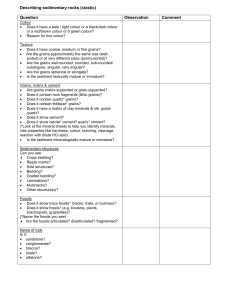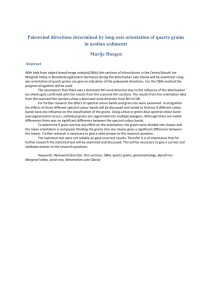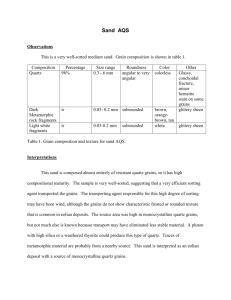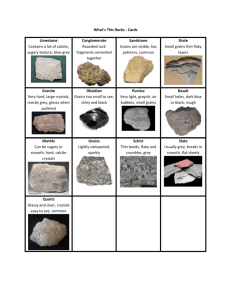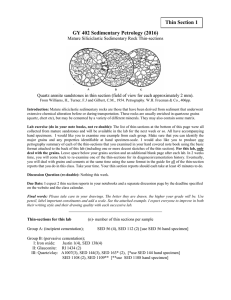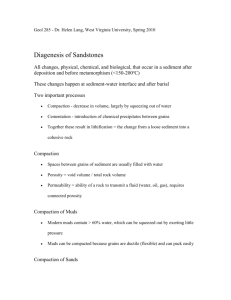Name of rock
advertisement
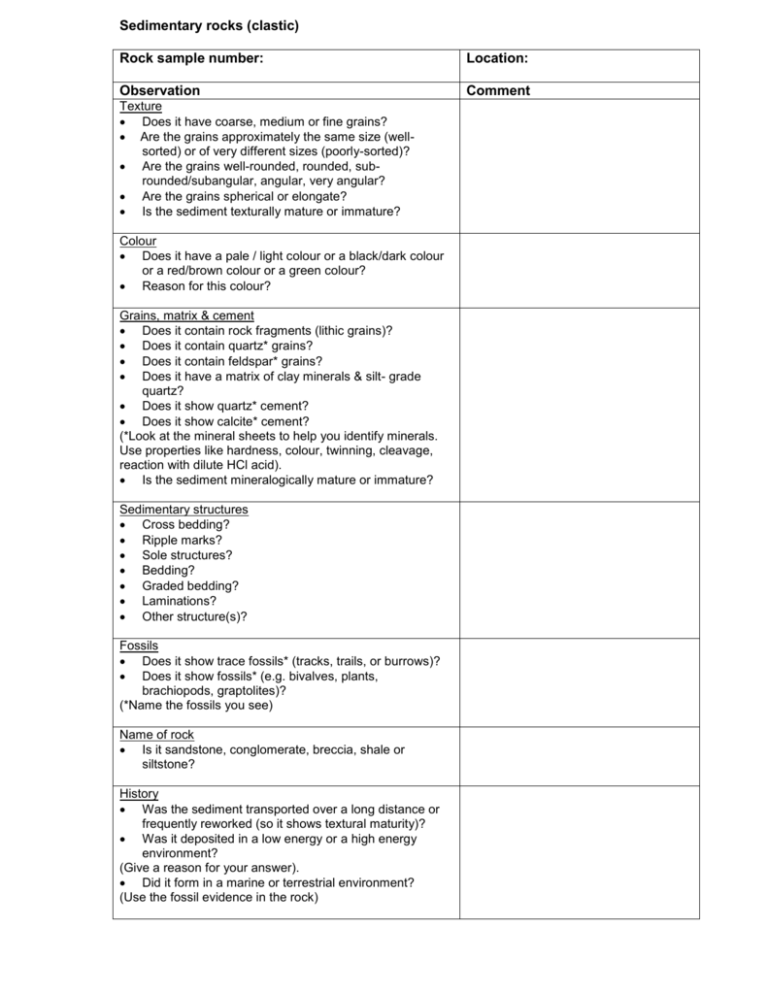
Sedimentary rocks (clastic) Rock sample number: Location: Observation Comment Texture Does it have coarse, medium or fine grains? Are the grains approximately the same size (wellsorted) or of very different sizes (poorly-sorted)? Are the grains well-rounded, rounded, subrounded/subangular, angular, very angular? Are the grains spherical or elongate? Is the sediment texturally mature or immature? Colour Does it have a pale / light colour or a black/dark colour or a red/brown colour or a green colour? Reason for this colour? Grains, matrix & cement Does it contain rock fragments (lithic grains)? Does it contain quartz* grains? Does it contain feldspar* grains? Does it have a matrix of clay minerals & silt- grade quartz? Does it show quartz* cement? Does it show calcite* cement? (*Look at the mineral sheets to help you identify minerals. Use properties like hardness, colour, twinning, cleavage, reaction with dilute HCl acid). Is the sediment mineralogically mature or immature? Sedimentary structures Cross bedding? Ripple marks? Sole structures? Bedding? Graded bedding? Laminations? Other structure(s)? Fossils Does it show trace fossils* (tracks, trails, or burrows)? Does it show fossils* (e.g. bivalves, plants, brachiopods, graptolites)? (*Name the fossils you see) Name of rock Is it sandstone, conglomerate, breccia, shale or siltstone? History Was the sediment transported over a long distance or frequently reworked (so it shows textural maturity)? Was it deposited in a low energy or a high energy environment? (Give a reason for your answer). Did it form in a marine or terrestrial environment? (Use the fossil evidence in the rock)
